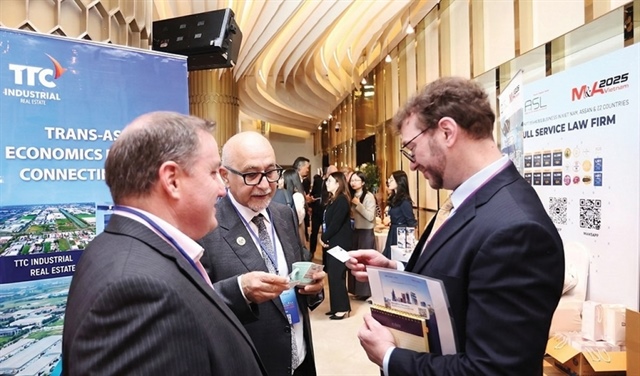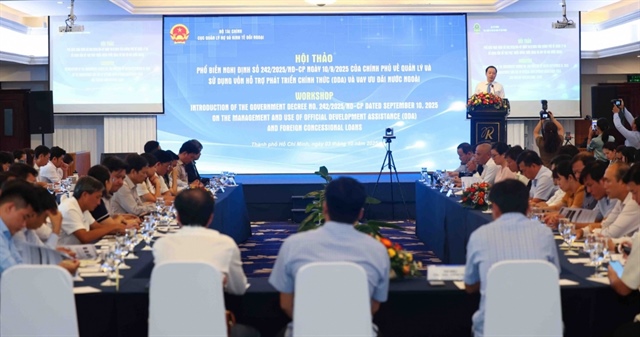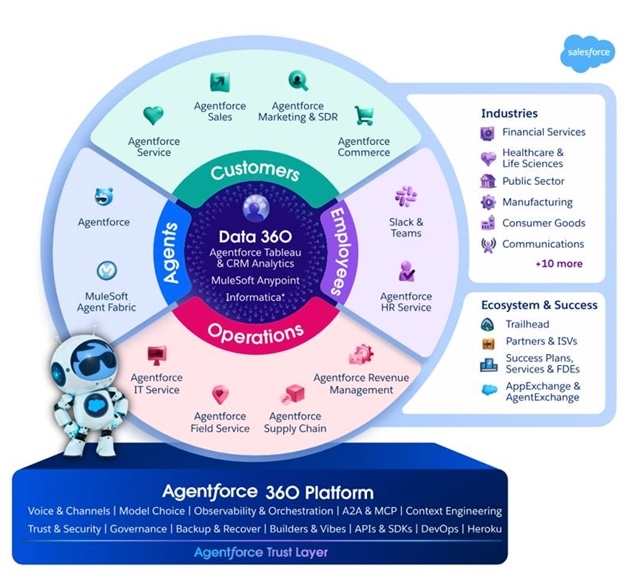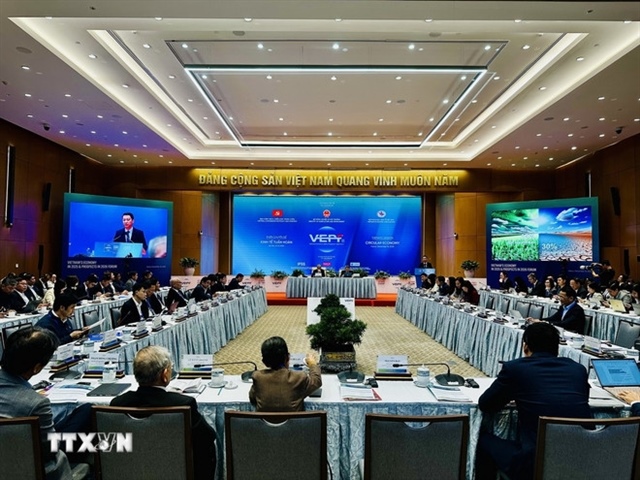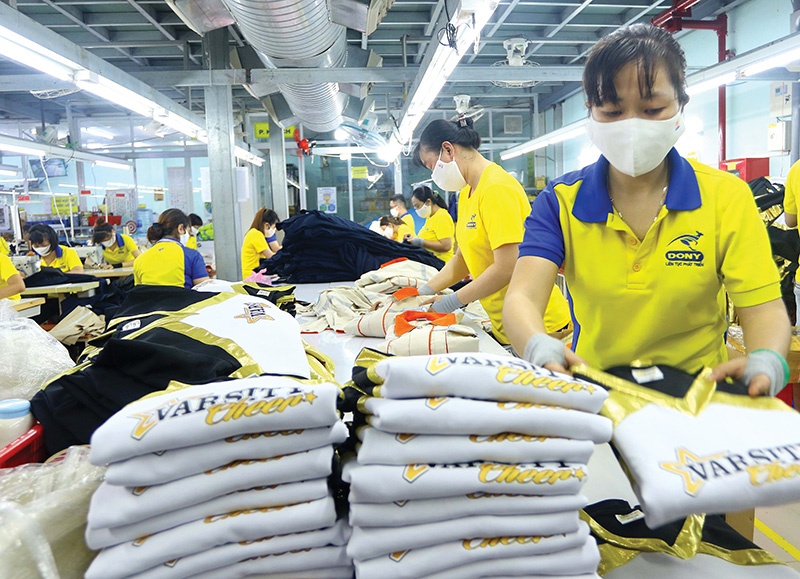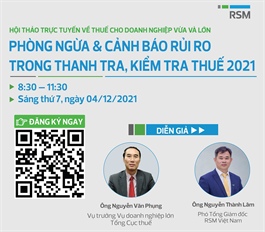Bonanza within reach with introduction of RCEP deal
Bonanza within reach with introduction of RCEP deal
With the Regional Comprehensive Economic Partnership set to take effect next year, more opportunities are around the corner for Vietnam to attract more investment and expand its trade with foreign partners.
All ASEAN member states and China last week said that they will assign authorised agencies in their countries to work out action plans to take advantage of the upcoming Regional Comprehensive Economic Partnership (RCEP).
“We welcome the entry into force of the RCEP agreement on January 1, 2022. We will work together for the effective implementation of the agreement, to deliver benefits to businesses and people in the region,” said a joint statement of the ASEAN-China Special Summit to commemorate the 30th anniversary of ASEAN-China dialogue relation held online last week.
ASEAN and China encouraged all parties to accelerate the completion of technical preparations for the implementation of the agreement. China stands ready to provide various kinds of support and assistance to ASEAN member states for their implementation of the agreement, if needed.
Chinese President Xi Jinping reaffirmed that China will open its market wider for products from ASEAN member states and be ready to import quality products including farm produce at a total value of $150 billion from these markets over the next five years.
Earlier in November, the ASEAN Secretariat announced it had received instruments of ratification/acceptance from six ASEAN member states as well as from four non-ASEAN signatories, meaning the January 1 enaction date is on course.
“The expeditious ratification process by signatory states is a true reflection of our strong commitment to a fair and open multilateral trading system for the benefit of the people in the region and the world. The implementation of the RCEP agreement starting will give a tremendous boost to the post-pandemic economic recovery efforts,” said ASEAN Secretary-General Dato Lim Jock Hoi.
Meanwhile, according to the ASEAN Secretariat, the preparatory work for the entry into force of the RCEP will continue. The preparatory work undertaken by signatory states aims to lay a solid ground for the full and effective implementation of the agreement through the finalisation of the technical and institutional aspects of the agreement.
Offering windfalls
Just like the EU-Vietnam and UK-Vietnam trade agreements (FTA) and the Comprehensive and Progressive Agreement for Trans-Pacific Partnership (CPTPP), the RCEP will reduce tariffs and set trade rules and help link supply chains, particularly as governments grapple with COVID-19 effects.
The deal is expected to cover all aspects of business including trade, services, e-commerce, telecommunications, and copyright though negotiations over some aspects still need to be finalised. Tariffs are expected to be reduced within 20 years.
The RCEP sets the tone for future trade in ASEAN. It will further build on previous trade agreements within the bloc but also include first-time agreements with other countries such as Japan and South Korea. In this context, trade within ASEAN may be negligible.
“ASEAN’s economy is projected to grow by 4 per cent this year and 5.2 per cent next year. But this positive economic outlook is no reason for complacency as there is a risk of uneven growth which could exacerbate the development gap and therefore we need to ensure a high utilisation rate of the agreement among businesses in the region,” Hoi said.
The RCEP seeks to eliminate up to 90 per cent of all import tariffs between member states within 20 years of it taking effect, while promoting the flow of services and investment and setting out regulations around rules of origin and intellectual property.
Benefiting Vietnam
According to experts, investment from South Korea, Japan, and Singapore, which are now the three largest foreign investors in Vietnam, is expected to increase in Vietnam and beyond.
Statistics from Vietnam’s Ministry of Planning and Investment showed that as of October 20, Vietnam attracted $91.7 billion in registered investment capital from ASEAN member states. Notably, registered investment capital from South Korea, Japan, and Singapore into Vietnam totalled $73.91 billion, $63.94 billion, and $63 billion, respectively.
Southeast Asia is now Vietnam’s fourth-largest export market, with the export turnover totalling $24.7 billion in 2018 and $25.3 billion in 2019, and $23.1 billion last year. The figure in the first 10 months of 2021 was $23 billion, up 21.3 per cent on-year.
Meanwhile, Southeast Asia is also Vietnam’s third-largest import market. The country’s import turnover from other member states was $32 billion in 2018, $32.1 billion in 2019, and $30 billion last year. The figure hit $33 billion in the first 10 months of 2021, up 34.8 per cent on-year.
According to analysis by the Peterson Institute for International Economics, Indonesia, Malaysia, Thailand, and Vietnam stand to benefit the most from the RCEP, which will add between $2-4 billion each year to their respective economies by 2030.
Fitch Solutions noted that for Vietnam, major export categories that are expected to benefit include IT, footwear, agriculture, automobiles, and telecommunications. The RCEP is expected to help Vietnam access large consumer markets double the size of those included in the CPTPP.
As Vietnam moves to become a high-tech manufacturer, the agreement can help local businesses raise exports and attract high-quality goods for its consumers. Moreover, with the demand for Vietnam’s exports like agriculture and fisheries products, Vietnam is set to benefit.
In addition, according to pan-Asia consultancy firm Dezan Shira & Associates, the simplification of procedures such as customs and rules of origin will help reduce bureaucracy allowing more small- and medium-sized enterprises (SMEs) to participate. These account for 98 per cent of all enterprises in Vietnam, contributing to 40 per cent of GDP, and thus the RCEP presents significant opportunities for Vietnamese SMEs to move up the value chain.
For investors operating across ASEAN, China, and other regions, Dezan Shira & Associates said the RCEP offers good news. “Streamlined customs procedures, unified rule of origin, and improved market access will make investing in multiple locations a much more viable and attractive investment strategy and likely bring China+1 business models to the fore,” it said. “The common rules will lower costs for companies with supply chains that p across Asia and may encourage multinationals to member countries to establish supply chains across the bloc, thus growing the global value chain activity in the region.”
The RCEP covers a market of 2.3 billion people and $26.2 trillion in global output. This accounts for about 30 per cent of the population worldwide and over a quarter in world exports.


